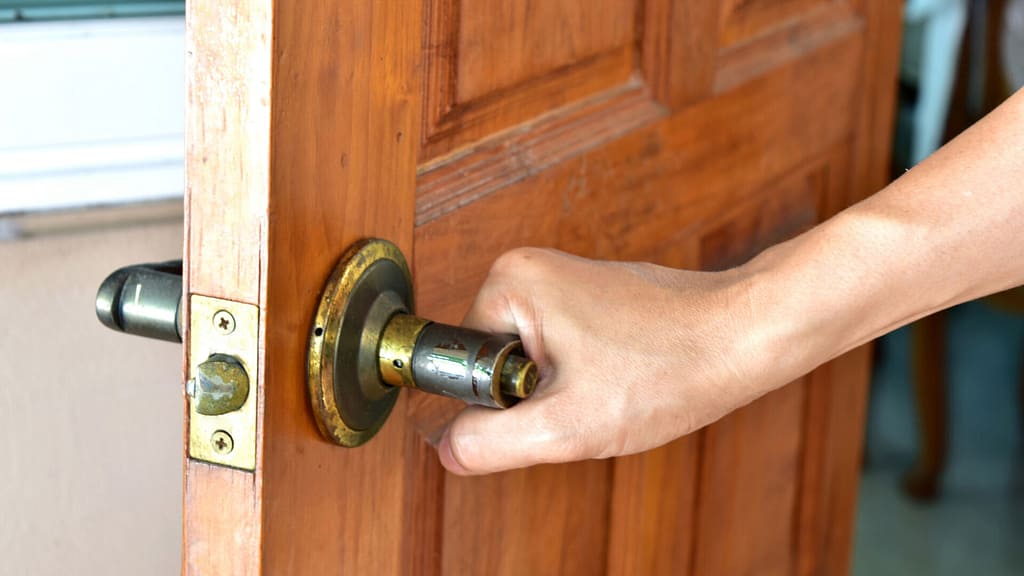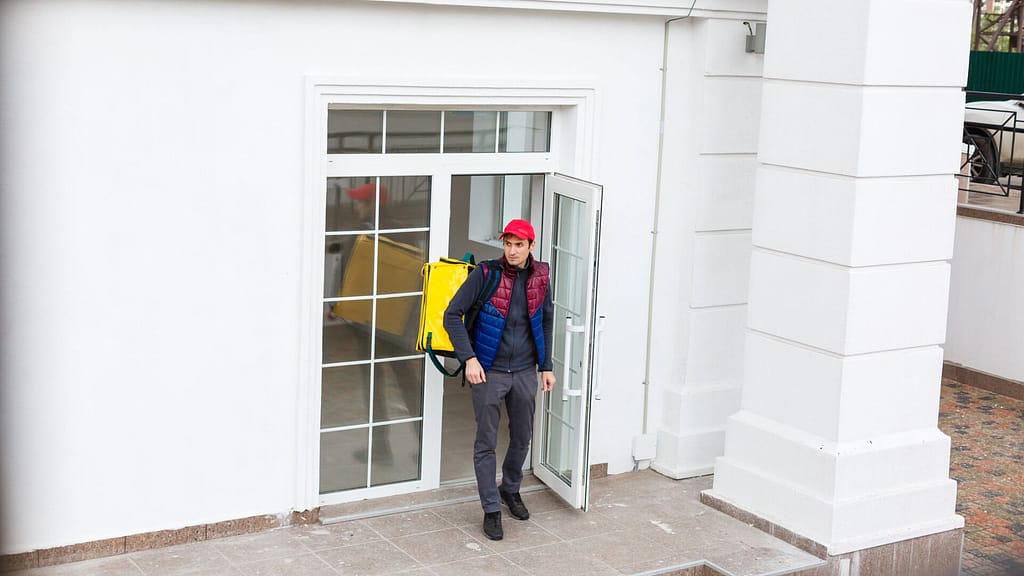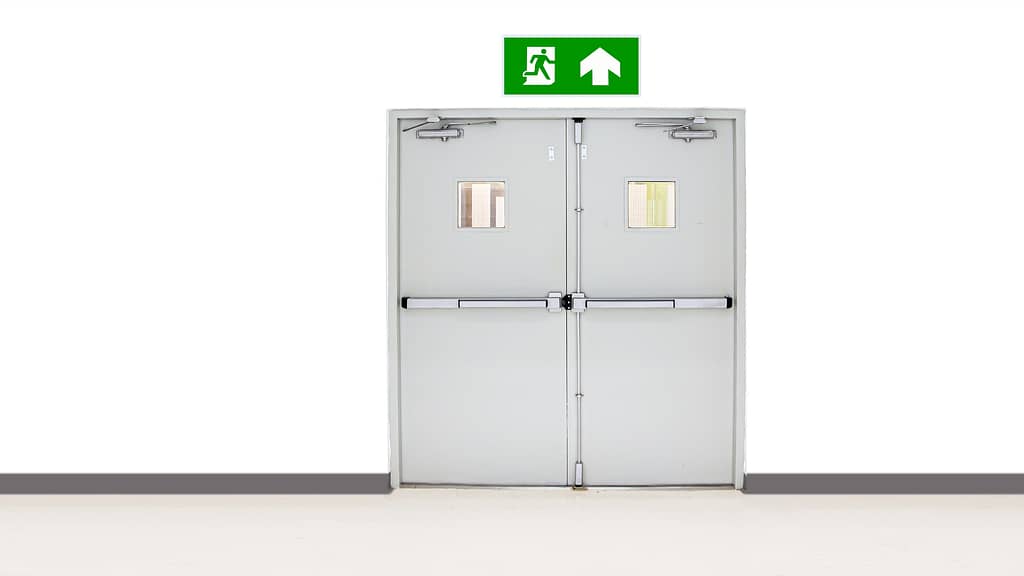Yes, exterior doors can swing out in New Jersey. They’re often used for enhanced safety and weather sealing. But it’s crucial to check local regulations before choosing this design for homes.
Table of contents
Why Door Swing Direction Matters?

When it comes to home design and architecture, even the smallest details can have a significant impact. One such detail, often overlooked but crucial, is the direction in which a door swings. At first glance, it might seem like a minor aesthetic choice, but the implications are far-reaching and multifaceted. Here’s why door swing direction is more than just a design decision:
Aesthetic Appeal
The door is often the first point of contact someone has with a building or a room. Its swing direction can affect the initial impression and the overall visual flow of a space. An in-swing door might offer a welcoming gesture as it invites guests into a home. Conversely, an out-swing door can present a sleek and unobstructed view of a room’s interior when open, seamlessly integrating indoor and outdoor spaces, especially in patios or balconies.
Functionality and Flow
The direction in which a door opens can significantly influence the usability of a space. In-swing doors might be preferable in compact areas where outdoor space is limited, ensuring there’s no obstruction when the door is open. On the other hand, out-swing doors can be beneficial for interiors, preventing the door from interfering with furniture placement or indoor movement, maximizing the usable area inside.
Safety Considerations
In situations where rapid exit is essential, like emergencies, the door’s swing direction can be a matter of safety. Out-swing doors can provide a quicker egress route, especially in crowded settings, as people can push the door while moving out. However, they must be clear of external obstructions. Conversely, in-swing doors might be at risk of being blocked from the inside, potentially hindering an escape.
Benefits of Out-Swing Doors

While in-swing doors have traditionally been a popular choice for many homeowners, the benefits of out-swing doors cannot be overlooked. These doors, which open outward from the interior of a building, offer several unique advantages that can make them an attractive option for both residential and commercial properties. Here are some of the key benefits:
Enhanced Security
One of the standout advantages of out-swing doors is the added security they provide. The design makes it challenging for potential intruders to force the door open from the outside. Since the door opens outward, any force applied from the outside only pushes the door further against its frame, making break-ins more difficult. Additionally, the exposed hinge pins of out-swing doors are typically designed to be non-removable, preventing unauthorized removal of the door.
Effective Weather Sealing
Out-swing doors can provide an exceptionally tight seal against external weather conditions. Due to their design, when strong winds blow against the door, it is pushed more firmly against its jamb. This feature ensures that rain, snow, and drafts have a harder time penetrating the threshold, keeping interiors dry and insulated. It’s an especially beneficial feature in areas prone to heavy storms or gusty conditions.
Space Utilization
For interiors where every inch counts, out-swing doors can be a boon. Since they swing out, these doors don’t interfere with furniture or internal fixtures, allowing for more flexible interior design and space planning. This is particularly useful in compact spaces or rooms where furniture positioning could otherwise be limited by an in-swing door.
Optimized for Evacuation

In emergency situations, where quick exit is paramount, out-swing doors provide an advantage. Crowds can push the doors open more rapidly, streamlining the evacuation process and potentially reducing the risk of injury.
Drawbacks of Out-Swing Doors
While out-swing doors undeniably offer a myriad of benefits, it’s essential to consider their potential drawbacks as well. Making an informed decision means weighing the pros against the cons. So, let’s delve into some of the challenges and limitations associated with out-swing doors:
Vulnerability to External Obstructions
One of the primary concerns with out-swing doors is the need for a clear path on the exterior. Whether it’s snow buildup in winter, fallen debris after a storm, or even potted plants placed too close to the doorway, these obstructions can hinder the door’s ability to open fully or, in extreme cases, at all. This could be particularly problematic in emergency situations where quick egress is essential.
Potential Wear and Tear
Because out-swing doors are exposed to external elements when open, they might be more susceptible to wear and tear. Rain, snow, and direct sunlight can take a toll on the door’s material, potentially affecting its lifespan and appearance over time.
Security Misconceptions
While out-swing doors can offer enhanced security against forced entry due to their design, they’re not entirely foolproof. The exposed hinges, even if designed to be non-removable, can still be a target for determined intruders with the right tools and knowledge.
Screen or Storm Door Challenges
Installing a screen or storm door can be trickier with out-swing main doors. Since the primary door opens outward, the screen door would need to be installed on the inside, which isn’t always ideal and could affect the aesthetics and functionality of the entryway.
Potential Cost Implications
Out-swing doors, given their unique hardware and construction to ensure security and weatherproofing, might sometimes be more expensive than their in-swing counterparts. This could factor into budget considerations when designing or renovating a home.
New Jersey Building Code and Regulations
When contemplating renovations or installations, especially concerning exterior doors in New Jersey homes, understanding the local building code stipulations is paramount. These codes, which might differ slightly across municipalities, are designed to ensure safety, accessibility, and sometimes even energy efficiency. Here are some of the pivotal aspects homeowners should be aware of:
- Direction of Swing: While there isn’t a statewide mandate specifying the direction in which an exterior door must swing for residential homes, individual municipalities might have their own preferences or guidelines. It’s essential to check with your local building department to ascertain if there are any specific rules governing this in your area.
- Egress Requirements: Safety is a top priority when it comes to homes. Thus, the New Jersey building code requires bedrooms and other primary sleeping areas to have at least one operable window or door for emergency egress. This means that if a homeowner is considering an out-swing door for such areas, it should open smoothly, remain unobstructed, and meet the minimum width and height requirements specified for safe and quick exit.
- Threshold and Landings: For exterior doors, the immediate area outside, known as the landing, has specific requirements concerning its size and level difference relative to the door’s threshold. These stipulations ensure a safe transition, minimizing trip hazards when entering or exiting the home.
For a seamless renovation or installation process, homeowners should consult directly with their local building department. While these general guidelines provide a foundation, there might be municipality-specific nuances or updates to the code that homeowners should be aware of. After all, compliance with local building codes not only guarantees safety but can also facilitate a smoother approval process for any renovation permits.
Practical Considerations in New Jersey
Beyond the intricacies of building codes and regulations, homeowners in New Jersey must also account for practical considerations when choosing the direction of their exterior doors. The Garden State’s diverse climate, community norms, and unique challenges all play a role in making an informed decision. Let’s delve into some of these practical factors:
Weather Patterns
New Jersey experiences a variety of weather conditions, from cold winters with snow and ice to humid summers with occasional heavy rain.
- Snow Accumulation: For homes in areas prone to significant snowfall, an out-swing door can become obstructed by accumulated snow, making it difficult or even impossible to open. Homeowners must prepare for routine snow clearance to ensure easy access.
- Wind Factors: Coastal regions or areas susceptible to strong winds might actually benefit from out-swing doors. Severe wind events are less likely to blow these doors inward, providing enhanced security and protection.
Emergency Egress
The ability to quickly and safely exit a home during emergencies is of paramount importance. Whether it’s a fire, a natural disaster, or another urgent situation, a door’s swing direction can significantly influence the time it takes to evacuate. Out-swing doors, for instance, can offer a swift exit pathway, eliminating the need to pull the door inward during a hurried escape. However, it’s essential to ensure that the area outside these doors remains unobstructed at all times to prevent any potential hindrances during emergencies.
Compliance with the Americans with Disabilities Act (ADA)
In homes, especially those open to the public or rented, door design can significantly impact accessibility, as underscored by the Americans with Disabilities Act (ADA). The ADA mandates doors to have a minimum 32-inch width for wheelchair access. People with limited hand mobility favor lever handles over traditional knobs because they are easier to use. Out-swing door thresholds should minimize trip risks, adhering to ADA height specifications and beveled slope guidelines. Furthermore, the force needed to open doors should be manageable for everyone, consistent with ADA standards.
Conclusion
If you’re planning to change your exterior door swing from inward to outward, it’s paramount to remember the various factors that come into play. While the prospect might seem straightforward, it encompasses multiple dimensions—security, aesthetics, safety, and more. One might think it’s as easy as reversing the hinges and handles, but the reality is far from it.
If you’re thinking about changing the swing direction of your exterior door from inward to outward, we recommend consulting a professional and getting a quote. This method guarantees correct, safe execution that adheres to all relevant regulations, ensuring your peace of mind and a doorway that matches your preferences and requirements.
Fact checked by: Jacob Petrosky (11/6/2023)
